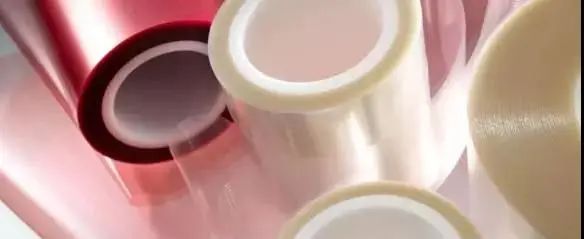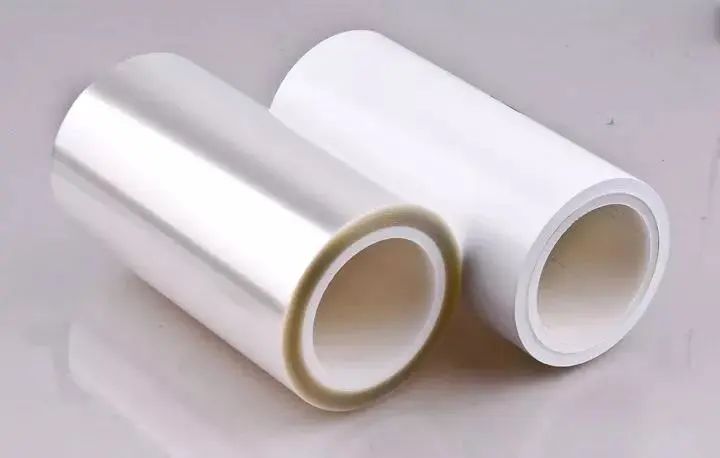

Hotline:0755-22277778
Tel:0755-22277778
Mobile:13826586185(Mr.Duan)
Fax:0755-22277776
E-mail:duanlian@xianjinyuan.cn
In the process of producing release films, we will encounter various problems. Today, I will share with you the common problems encountered in the production process of release films.
Release filmFacial scratch
The flat surface of the film material is scratched, forming fine groove lines, and a bright line can be observed through reflection. Scratches on the membrane surface can be divided into large-area scratches and intermittent scratches.
1. There are three reasons for large-scale scratches: ① It may be due to the guide roller not rotating. ② The tension is too low and the speed is relatively slow Unknown objects come into direct contact with the membrane surface (such as falling of the straightener, etc.)
2. There are two reasons for intermittent scratches: ① The oven belt is aging and damaged. ② There are foreign objects on the guide roller.
Release film surface is dirty
The surface of the film material has adhesive particles, foreign objects, etc., and its characteristic is erasable.
(1) The guide roller or pressure roller is dirty and not cleaned thoroughly
(2) The filtering inside the oven is not clean enough
(3) Workshop 5S not done well

Uneven winding of release film
The end face after winding is uneven, with a general protrusion of ≤ 5mm on the end face.
(1) Correction failure
(2) Insufficient inflation or non inflation inside the tube
(3) Poor paper tube (deviation or embossing during winding)
(4) Unbalanced or unstable pressure of the pressure shaft
(5) The guide roller is not horizontal
(6) The winding tension is too low
White mist on the surface of the release film
Local areas show white cloud like spots, resembling traces of milk flowing through.
(1) The main agent or solvent is contaminated
(2) The temperature on the second floor alternates with the temperature in the workshop
(3) The humidity of the coating head is too high
(4) After the product leaves the oven, hot air is discharged to produce water vapor
White spots on the surface of the release film
There are white particle dots on the membrane surface that cannot be erased.
(1) The adhesive particles generated by the production time of the coating head adhesive groove being too long and not cleaned in a timely manner
(2) The oven and guide rollers are not cleaned thoroughly
(3) Wrong direction of inlet and outlet of filter rod
(4) There are foreign objects in the incoming solvent (filter cloth is used for solvent spraying)
Rainbow pattern
Optical refraction and reflection produce rainbow colors like oil layers on water.
(1) The raw film has slight rainbow patterns on the incoming material
(2) The proportion of the product formula is inappropriate.

Scraper imprint
The uneven lines of the coating caused by abnormal scraper of the coating head.
(1) Horizontal printing is mostly caused by excessive blade air pressure
(2) Vertical printing is caused by the blade not being cleaned and quickly encountering foreign objects
Vertical pattern (tension line)
The patterns that appear on the membrane material after tension and stretching, especially at high temperatures.
(1) Vertical pattern of raw film incoming material
(2) Uneven thickness of raw film incoming materials
(3) Excessive tension
(4) The temperature is too high
(5) Uneven guide roller
Release film does not release
After being attached to the tape, it cannot be peeled off. There are two types of non detached types: local non detached type and point non detached type.
The reasons for local non detachment include:
(1) Not discovered in a timely manner after applying the glue to the cloth head;
(2) The product stays in the oven for too long and is difficult to peel off;
(3) The pressure roller and wrapping angle were not adjusted properly, and the scraper did not hit down.
Reason for point like non detachment: Excessive static electricity at the winding point can damage the silicon oil layer
Folding of release film
The surface of the release film is uneven. The wrinkles on the release film are due to excessive tension during winding, uneven surface of the paper tube, or wrinkles on the surface of the raw material.

Advanced Institute (Shenzhen) Technology Co., Ltd, © two thousand and twenty-onewww.avanzado.cn. All rights reservedGuangdong ICP No. 2021051947-1 © two thousand and twenty-onewww.xianjinyuan.cn. All rights reservedGuangdong ICP No. 2021051947-2